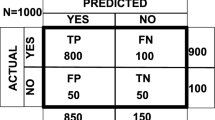Abstract
For network intrusion detection systems it is becoming increasingly difficult to reliably report today’s complex attacks without having external context at hand. Unfortunately, however, today’s IDS cannot readily integrate intelligence, such as dynamic blacklists, into their operation. In this work, we introduce a fundamentally new capability into IDS processing that vastly broadens a system’s view beyond what is visible directly on the wire. We present a novel Input Framework that integrates external information in real-time into the IDS decision process, independent of specific types of data, sources, and desired analyses. We implement our design on top of an open-source IDS, and we report initial experiences from real-world deployment in a large-scale network environment. To ensure that our system meets operational constraints, we further evaluate its technical characteristics in terms of the intelligence volume it can handle under realistic workloads, and the latency with which real-time updates become available to the IDS analysis engine. The implementation is freely available as open-source software.
Access this chapter
Tax calculation will be finalised at checkout
Purchases are for personal use only
Preview
Unable to display preview. Download preview PDF.
Similar content being viewed by others
References
Department of Energy Cyber Joint Cybersecurity Coordination Center, http://www.doecirc.energy.gov/
National Software Reference Library, http://www.nsrl.nist.gov/
Antonakakis, M., Perdisci, R., Dagon, D., Lee, W., Feamster, N.: Building a Dynamic Reputation System for DNS. In: USENIX Security (2010)
Blacklist.rules, ClamAV, and Data Mining, http://vrt-blog.snort.org/2011/02/blacklistrules-clamav-and-data-mining.html
Collective Intelligence Framework, http://code.google.com/p/collective-intelligence-framework/
Cyber Fed Model – Community-Wide Cyber Security Alert Distribution, http://web.anl.gov/it/cfm/
Cymru, T.: Malware Hash Registry, http://www.team-cymru.org/Services/MHR/
Debar, H., Wespi, A.: Aggregation and Correlation of Intrusion-Detection Alerts. In: Lee, W., Mé, L., Wespi, A. (eds.) RAID 2001. LNCS, vol. 2212, pp. 85–103. Springer, Heidelberg (2001)
Dreger, H., Feldmann, A., Paxson, V., Sommer, R.: Operational Experiences with High-Volume Network Intrusion Detection. In: ACM CCS (2004)
DShield.org Recommended Block List, http://feeds.dshield.org/block.txt
Google Safe Browsing API, http://code.google.com/apis/safebrowsing
Gu, G., Porras, P., Yegneswaran, V., Fong, M., Lee, W.: BotHunter: Detecting Malware Infection through IDS-driven Dialog Correlation. In: USENIX Security (2007)
Jung, J., Paxson, V., Berger, A.W., Balakrishnan, H.: Fast Portscan Detection Using Sequential Hypothesis Testing. In: IEEE Security and Privacy (2004)
Katti, S., Krishnamurthy, B., Katabi, D.: Collaborating against common enemies. In: IMC (2005)
Ollmann, G.: Blacklists & Dynamic Reputation. White paper (2011), http://www.damballa.com/downloads/r_pubs/WP_Blacklists_Dynamic_Reputation.pdf
Paxson, V.: Bro: A System for Detecting Network Intruders in Real-Time. Computer Networks 31(23–24), 2435–2463 (1999)
Roesch, M.: Snort: Lightweight Intrusion Detection for Networks. In: Systems Administration Conference (1999)
Security Event System, http://www.ren-isac.net/ses
Sharma, A., Kalbarczyk, Z., Barlow, J., Iyer, R.K.: Analysis of Security Data From a Large Computing Organization. In: IEEE DSN (2011)
Sinha, S., Bailey, M., Jahanian, F.: Improving SPAM Blacklisting through Dynamic Thresholding and Speculative Aggregation. In: NDSS (2010)
Snort 2.9.1 release announcement, http://blog.snort.org/2011/08/snort-291-has-been-released-including.html
Sommer, R., Paxson, V.: Exploiting Independent State For Network Intrusion Detection. In: ACSAC (2005)
The Spamhaus Block List, http://www.spamhaus.org/sbl
Open Information Security Foundation: Suricata Download, http://www.openinfosecfoundation.org/index.php/downloads
Symantec - Configuring blacklisting for base event types with IDS/IPS on Symantec Gateway Security 5400 Series 2.x, http://www.symantec.com/business/support/index?page=content&id=TECH81936
Valdes, A., Skinner, K.: Probabilistic Alert Correlation. In: Lee, W., Mé, L., Wespi, A. (eds.) RAID 2001. LNCS, vol. 2212, pp. 54–68. Springer, Heidelberg (2001)
Vallentin, M., Sommer, R., Lee, J., Leres, C., Paxson, V., Tierney, B.: The NIDS Cluster: Scalable, Stateful Network Intrusion Detection on Commodity Hardware. In: Kruegel, C., Lippmann, R., Clark, A. (eds.) RAID 2007. LNCS, vol. 4637, pp. 107–126. Springer, Heidelberg (2007)
Verizon: Data Breach Investigations Report. Tech. rep. (2012), http://www.wired.com/images_blogs/threatlevel/2012/03/Verizon-Data-Breach-Report-2012.pdf
VirusTotal Public API, https://www.virustotal.com/documentation/public-api/
Author information
Authors and Affiliations
Editor information
Editors and Affiliations
Rights and permissions
Copyright information
© 2012 Springer-Verlag Berlin Heidelberg
About this paper
Cite this paper
Amann, J., Sommer, R., Sharma, A., Hall, S. (2012). A Lone Wolf No More: Supporting Network Intrusion Detection with Real-Time Intelligence. In: Balzarotti, D., Stolfo, S.J., Cova, M. (eds) Research in Attacks, Intrusions, and Defenses. RAID 2012. Lecture Notes in Computer Science, vol 7462. Springer, Berlin, Heidelberg. https://doi.org/10.1007/978-3-642-33338-5_16
Download citation
DOI: https://doi.org/10.1007/978-3-642-33338-5_16
Publisher Name: Springer, Berlin, Heidelberg
Print ISBN: 978-3-642-33337-8
Online ISBN: 978-3-642-33338-5
eBook Packages: Computer ScienceComputer Science (R0)




